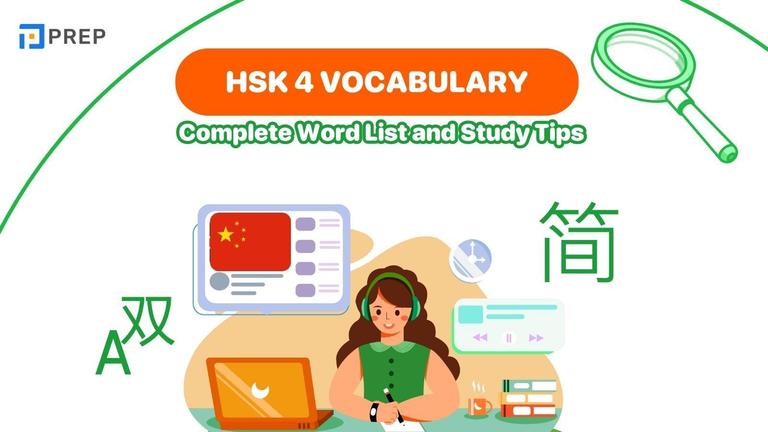100+ Essential 3rd Grade Chinese Words Lists, Themes & Tips
Our list of 100+ most important and common 3rd grade Chinese words is a resource for teachers and parents of young Chinese learners. It centers on 3rd grade vocabulary as a foundation for communication, presenting this content thematically rather than through rote memorization. The content explains that 3rd grade typically involves 80-150 words (YCT Levels 1-2) and provides a core list of 70 high-frequency words organized by theme and part of speech. It emphasizes including function words alongside nouns for constructing actual sentences.
- I. What to Expect: Defining "3rd Grade Level" in Chinese Learning
- II. Core List for 3rd Grade Chinese Words
- III. Learning by Theme: Common 3rd Grade Vocabulary Topics
- IV. Beyond Nouns: Including Essential Function Words
- V. Making Learning Fun: Tips for Practicing 3rd Grade Chinese Words
- VI. Answering Your Questions: 3rd Grade Chinese Words FAQs
- VII. Building Communication: Using 3rd Grade Chinese Words as a Stepping Stone
I. What to Expect: Defining "3rd Grade Level" in Chinese Learning
Understanding "3rd grade level" in Chinese language learning provides essential guidance for teachers and parents supporting young learners. This typically refers to students around 8-9 years old who demonstrate these characteristics:
-
Focus on listening comprehension and speaking simple sentences using 3rd grade Chinese words like 我 (wǒ - I), 你 (nǐ - you), and 喜欢 (xǐhuan - to like)
-
Ability to recognize 80-150 characters, including essential terms like 学校 (xuéxiào - school), 家庭 (jiātíng - family), and 动物 (dòngwù - animals)
-
Beginning to understand more sophisticated sentence structures using function words like 和 (hé - and), 在 (zài - at/in/on), and 的 (de - possessive particle)
-
Building on established Pinyin proficiency for correct pronunciation of tone-critical words
-
Learning thematic vocabulary groups rather than isolated 3rd grade Chinese words
Note that actual expectations vary significantly based on program type (immersion vs. FLES), instructional hours, curriculum, and school goals.
II. Core List for 3rd Grade Chinese Words
This core vocabulary list combines high-frequency words relevant to 3rd graders' daily lives, overlaps significantly with YCT Level 1 and early Level 2 vocabulary, and incorporates themes commonly found in elementary Chinese curricula. The words have been selected based on their practical utility, frequency of use, and appropriateness for this developmental stage.
|
3rd grade Chinese words |
Hanyu Pinyin |
English Meaning |
|
我 |
wǒ |
I, me |
|
你 |
nǐ |
you (singular) |
|
他 |
tā |
he, him |
|
她 |
tā |
she, her |
|
我们 |
wǒmen |
we, us |
|
你们 |
nǐmen |
you (plural) |
|
他们 |
tāmen |
they, them (male or mixed) |
|
她们 |
tāmen |
they, them (female) |
|
爸爸 |
bàba |
dad, father |
|
妈妈 |
māma |
mom, mother |
|
哥哥 |
gēge |
older brother |
|
弟弟 |
dìdi |
younger brother |
|
姐姐 |
jiějie |
older sister |
|
妹妹 |
mèimei |
younger sister |
|
爷爷 |
yéye |
grandfather (paternal) |
|
奶奶 |
nǎinai |
grandmother (paternal) |
|
外公 |
wàigōng |
grandfather (maternal) |
|
外婆 |
wàipó |
grandmother (maternal) |
|
朋友 |
péngyou |
friend |
|
老师 |
lǎoshī |
teacher |
|
学生 |
xuésheng |
student |
|
学校 |
xuéxiào |
school |
|
教室 |
jiàoshì |
classroom |
|
书 |
shū |
book |
|
书包 |
shūbāo |
schoolbag, backpack |
|
桌子 |
zhuōzi |
desk, table |
|
椅子 |
yǐzi |
chair |
|
猫 |
māo |
cat |
|
狗 |
gǒu |
dog |
|
鱼 |
yú |
fish |
|
鸟 |
niǎo |
bird |
|
熊猫 |
xióngmāo |
panda |
|
米饭 |
mǐfàn |
rice (cooked) |
|
面条 |
miàntiáo |
noodles |
|
水 |
shuǐ |
water |
|
牛奶 |
niúnǎi |
milk |
|
苹果 |
píngguǒ |
apple |
|
香蕉 |
xiāngjiāo |
banana |
|
红色 |
hóngsè |
red |
|
蓝色 |
lánsè |
blue |
|
黄色 |
huángsè |
yellow |
|
绿色 |
lǜsè |
green |
|
黑色 |
hēisè |
black |
|
白色 |
báisè |
white |
|
大 |
dà |
big, large |
|
小 |
xiǎo |
small |
|
高 |
gāo |
tall, high |
|
矮 |
ǎi |
short (height) |
|
好 |
hǎo |
good |
|
坏 |
huài |
bad |
|
一 |
yī |
one |
|
二 |
èr |
two |
|
三 |
sān |
three |
|
四 |
sì |
four |
|
五 |
wǔ |
five |
|
六 |
liù |
six |
|
七 |
qī |
seven |
|
八 |
bā |
eight |
|
九 |
jiǔ |
nine |
|
十 |
shí |
ten |
|
今天 |
jīntiān |
today |
|
明天 |
míngtiān |
tomorrow |
|
昨天 |
zuótiān |
yesterday |
|
上午 |
shàngwǔ |
morning |
|
下午 |
xiàwǔ |
afternoon |
|
晚上 |
wǎnshang |
evening, night |
|
喜欢 |
xǐhuan |
to like |
|
爱 |
ài |
to love |
|
想 |
xiǎng |
to think, to miss, to want |
|
看 |
kàn |
to look, to watch, to read |
|
听 |
tīng |
to listen |
|
说 |
shuō |
to speak, to say |
|
读 |
dú |
to read aloud |
|
写 |
xiě |
to write |
|
吃 |
chī |
to eat |
|
喝 |
hē |
to drink |
|
去 |
qù |
to go |
|
来 |
lái |
to come |
Remember that learning the correct tones along with the Pinyin and characters is absolutely essential in Chinese. Even slight tone variations can change the meaning of a word completely, so practice listening to and reproducing the tones accurately as you learn these 3rd grade chinese words.
III. Learning by Theme: Common 3rd Grade Vocabulary Topics
Learning vocabulary thematically helps children make meaningful connections between related concepts and significantly aids retention. The following sections group relevant 3rd grade Chinese words by common topics, allowing for more contextual learning and practical application in everyday situations.
-
Family (家庭 Jiātíng)
Family vocabulary forms a cornerstone of early Chinese learning, providing students with the language to discuss important people in their lives. This category includes terms for immediate family members as well as extended family relationships.
父母 (fùmǔ - parents), 爸爸 (bàba - dad), 妈妈 (māma - mom), 哥哥 (gēge - older brother), 弟弟 (dìdi - younger brother), 姐姐 (jiějie - older sister), 妹妹 (mèimei - younger sister), 爷爷 (yéye - paternal grandfather), 奶奶 (nǎinai - paternal grandmother), 外公 (wàigōng - maternal grandfather), 外婆 (wàipó - maternal grandmother), 叔叔 (shūshu - uncle), 阿姨 (āyí - aunt), 孩子 (háizi - child), 朋友 (péngyou - friend)
-
School (学校 Xuéxiào)
School-related vocabulary enables students to discuss their educational environment and activities, an important part of their daily lives. These 3rd grade Chinese words cover locations, people, and objects encountered in the classroom setting.
学校 (xuéxiào - school), 老师 (lǎoshī - teacher), 学生 (xuésheng - student), 同学 (tóngxué - classmate), 教室 (jiàoshì - classroom), 书 (shū - book), 书包 (shūbāo - backpack), 铅笔 (qiānbǐ - pencil), 笔 (bǐ - pen), 橡皮 (xiàngpí - eraser), 桌子 (zhuōzi - desk), 椅子 (yǐzi - chair), 作业 (zuòyè - homework), 课 (kè - class, lesson), 问题 (wèntí - question)
-
Animals (动物 Dòngwù)
In 3rd grade Chinese words’ topics, animal vocabulary captivates young learners' interest while building essential noun recognition. This theme includes common pets, farm animals, and popular wild animals.
猫 (māo - cat), 狗 (gǒu - dog), 鱼 (yú - fish), 鸟 (niǎo - bird), 兔子 (tùzi - rabbit), 熊猫 (xióngmāo - panda), 老虎 (lǎohǔ - tiger), 狮子 (shīzi - lion), 猴子 (hóuzi - monkey), 大象 (dàxiàng - elephant), 长颈鹿 (chángjǐnglù - giraffe), 牛 (niú - cow), 马 (mǎ - horse), 羊 (yáng - sheep), 鸡 (jī - chicken)
-
Food and Drink (食物和饮料 Shíwù hé yǐnliào)
Food vocabulary allows students to express preferences and needs, building practical conversational skills. These terms cover common foods, drinks, and related verbs.
米饭 (mǐfàn - rice), 面条 (miàntiáo - noodles), 馒头 (mántou - steamed bun), 面包 (miànbāo - bread), 肉 (ròu - meat), 鸡蛋 (jīdàn - egg), 水果 (shuǐguǒ - fruit), 苹果 (píngguǒ - apple), 香蕉 (xiāngjiāo - banana), 橙子 (chéngzi - orange), 水 (shuǐ - water), 茶 (chá - tea), 牛奶 (niúnǎi - milk), 果汁 (guǒzhī - juice), 吃 (chī - to eat), 喝 (hē - to drink)
-
Colors and Shapes (颜色和形状 Yánsè hé xíngzhuàng)
Colors and shapes provide foundational descriptive vocabulary that applies across numerous contexts. This category helps students develop basic descriptive language skills.
红色 (hóngsè - red), 黄色 (huángsè - yellow), 蓝色 (lánsè - blue), 绿色 (lǜsè - green), 黑色 (hēisè - black), 白色 (báisè - white), 紫色 (zǐsè - purple), 橙色 (chéngsè - orange), 粉色 (fěnsè - pink), 圆形 (yuánxíng - circle), 正方形 (zhèngfāngxíng - square), 三角形 (sānjiǎoxíng - triangle), 长方形 (chángfāngxíng - rectangle)
-
Actions (动作 Dòngzuò)
Action verbs enable students to construct simple sentences and describe activities. These 3rd grade Chinese words are essential for forming basic subject-verb-object sentences.
看 (kàn - to see, to watch, to read), 听 (tīng - to listen), 说 (shuō - to speak), 读 (dú - to read aloud), 写 (xiě - to write), 走 (zǒu - to walk), 跑 (pǎo - to run), 跳 (tiào - to jump), 喜欢 (xǐhuan - to like), 想 (xiǎng - to want, to think), 去 (qù - to go), 来 (lái - to come), 玩 (wán - to play), 学习 (xuéxí - to study), 睡觉 (shuìjiào - to sleep)
-
Descriptions (描述 Miáoshù)
Descriptive words allow for more nuanced expression and comparison. These adjectives help students provide simple descriptions of objects, people, and feelings.
大 (dà - big), 小 (xiǎo - small), 高 (gāo - tall), 矮 (ǎi - short), 长 (cháng - long), 短 (duǎn - short), 好 (hǎo - good), 坏 (huài - bad), 热 (rè - hot), 冷 (lěng - cold), 快 (kuài - fast), 慢 (màn - slow), 新 (xīn - new), 旧 (jiù - old), 快乐 (kuàilè - happy), 难过 (nánguò - sad)
-
Time and Numbers (时间和数字 Shíjiān hé shùzì)
Time-related words and numbers form essential building blocks for discussing schedules, quantities, and temporal concepts. This foundational vocabulary of 3rd grade Chinese words appears frequently in daily communication.
一 (yī - one), 二 (èr - two), 三 (sān - three), 四 (sì - four), 五 (wǔ - five), 六 (liù - six), 七 (qī - seven), 八 (bā - eight), 九 (jiǔ - nine), 十 (shí - ten), 星期一 (xīngqīyī - Monday), 星期二 (xīngqīèr - Tuesday), 今天 (jīntiān - today), 明天 (míngtiān - tomorrow), 昨天 (zuótiān - yesterday), 上午 (shàngwǔ - morning), 下午 (xiàwǔ - afternoon), 晚上 (wǎnshang - evening)
IV. Beyond Nouns: Including Essential Function Words
Communication requires more than just naming things; function 3rd grade Chinese words such as pronouns, question words, and connectors play a crucial role in building simple sentences, even at the 3rd grade level. These structural elements transform vocabulary lists into usable language for real communication.
-
The basic pronouns form the foundation of personal expression: 我 (wǒ - I/me), 你 (nǐ - you), 他 (tā - he/him), 她 (tā - she/her), 我们 (wǒmen - we/us), 你们 (nǐmen - you plural), 他们/她们 (tāmen - they/them). These pronouns enable students to form simple subject-verb-object sentences that relate to themselves and others in their environment.
-
Simple question words allow students to seek information and engage in basic dialogues: 吗 (ma - question particle used at end of sentences), 什么 (shénme - what), 谁 (shéi/shuí - who), 哪里/哪儿 (nǎli/nǎr - where), 几 (jǐ - how many). Learning these question formats early helps develop conversational ability and information-seeking skills.
-
Common conjunctions, prepositions, and particles connect ideas and add grammatical structure: 和 (hé - and), 在 (zài - at/in/on), 的 (de - possessive particle), 了 (le - completion particle). Although seemingly simple, these function words significantly enhance a student's ability to form more sophisticated expressions beyond single-word vocabulary.
V. Making Learning Fun: Tips for Practicing 3rd Grade Chinese Words
Memorizing lists is rarely effective for young learners; instead, practice needs to be engaging and contextual to facilitate lasting retention. Here are practical, fun approaches to reinforce 3rd grade Chinese words through interactive activities.
-
Create and use flashcards with your child, incorporating different colors for different themes or parts of speech. Consider using the front for Chinese characters, with Pinyin and English on the back, gradually transitioning to character-only recognition. Digital flashcard apps like Quizlet can also be valuable tools, though it's important to verify the accuracy of user-generated sets before relying on them for instruction.
-
Transform learning into games by playing matching activities with characters to Pinyin or English meanings, organizing Bingo sessions with vocabulary words or pictures, or engaging in Pictionary and Charades using action verbs or nouns from the vocabulary list. These game-based approaches create positive associations with learning while reinforcing recognition and recall.
-
Label objects around your home with sticky notes showing both the Chinese character and Pinyin for common items (door 门 mén, chair 椅子 yǐzi, window 窗户 chuānghu, etc.). This environmental print creates constant exposure to vocabulary in context and associates the words with tangible objects in the child's daily environment.
-
Encourage building very simple sentences using known vocabulary, focusing on basic Subject-Verb-Object structures. Even simple constructions like 我喜欢猫 (Wǒ xǐhuān māo - I like cats) or 他吃苹果 (Tā chī píngguǒ - He eats an apple) help children see how individual words function within meaningful communication contexts.
-
Seek out age-appropriate graded readers or picture books with simple, repetitive text that incorporates target vocabulary. These materials provide contextual reinforcement while demonstrating how 3rd grade Chinese words appear in authentic contexts, bridging the gap between isolated vocabulary and connected language use.
VI. Answering Your Questions: 3rd Grade Chinese Words FAQs
This section addresses common questions that parents and educators often have about appropriate vocabulary development for 3rd grade Chinese words’ language learners.
-
What makes a Chinese word appropriate for 3rd grade level?
Several factors determine whether words are suitable for 3rd grade Chinese words lists. First, relevance plays a crucial role—words should connect directly to a child's daily life and interests, such as family, school, animals, and basic activities. Second, frequency matters significantly, as commonly used words provide greater utility and more opportunities for reinforcement. Third, character simplicity is considered, with preference given to characters with fewer strokes, particularly those with pictographic or simple ideographic origins where possible. Finally, phonetic regularity factors in, with initial vocabulary often avoiding complex initial/final Pinyin combinations that might prove challenging for young learners.
-
How many Chinese words should a 3rd grader know?
There is no single, definitive number, as vocabulary expectations depend heavily on program intensity and instructional hours. In intensive immersion programs, students might recognize several hundred characters by the end of 3rd grade, while FLES (Foreign Language in Elementary School) programs might target closer to 100-150 words during this period. When compared to standardized benchmarks, 3rd grade often correlates with YCT Level 1 (approximately 80 words) to YCT Level 2 (approximately 150 words), with many programs aiming for vocabulary recognition within or surpassing the YCT 2 range depending on instructional intensity and program goals.
-
Is there a standardized national curriculum for 3rd grade Chinese in the US?
No, there is no standardized national curriculum for K-12 foreign languages in the United States, unlike some countries with centralized educational systems. Chinese language programs vary significantly by state, district, and even individual school, based on factors including funding availability, program objectives (immersion versus exposure), teacher preferences and background, and adopted instructional materials. This variation means that vocabulary lists and learning expectations may differ substantially between programs, though the core themes and high-frequency words typically remain consistent despite these programmatic differences.
VII. Building Communication: Using 3rd Grade Chinese Words as a Stepping Stone
Mastering age-appropriate vocabulary builds confidence and communication skills in young Chinese learners. The 3rd grade Chinese words lists provide a framework for developing practical language capabilities beyond memorization.
This vocabulary serves as a stepping stone for future language development. As children become comfortable with these core words and form simple sentences, they gain confidence in expressing more complex thoughts. By using the suggested learning strategies consistently, you'll help establish the foundation needed for continued growth and success in their Chinese language journey.

Hi I'm Chloe, and I am currently serving as an Product Content Administrator at Prep Education. With over five years of experience in independent online IELTS study and exam preparation, I am confident in my ability to support learners in achieving their highest possible scores.
Comment
Premium content
View allPersonalized roadmap
Most read












